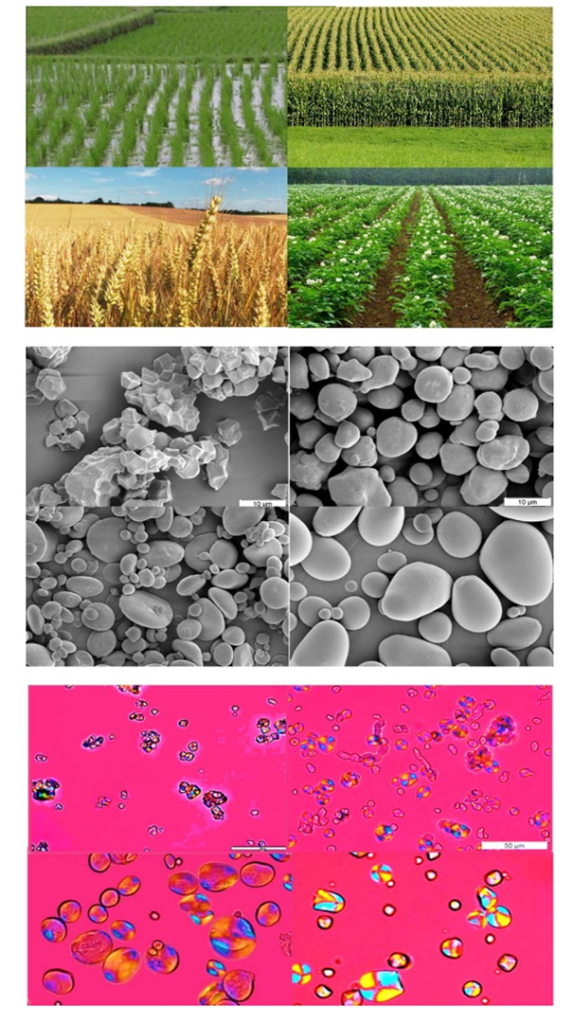Starch has been used over several millennia for many different applications. However, research on understanding this substance spans about three centuries starting with Leeuwenhoek, who observed it microscopically as discrete granules in 1716.
About 250 million years ago, the world consisted of a single giant landmass now known as Pangaea. Geological forces broke Pangaea apart, creating the continents and hemispheres familiar today. Over the fourth eons, the separate corners of the earth developed wildly different suites of plants and animals. Nevertheless, the evolution retained the starch granule as Nature’s chief way to store energy in green plants over long periods. The granule is well suited to this role, being insoluble in water and densely packed but still available to the plant’s catabolic enzymes.
Starch granules are mainly found in seeds, roots and tubers, as well as in stems, leaves, fruits and even pollen. The granules occur in all shapes and sizes (spheres, ellipsoids, polygons, platelets and irregular tubules); they range from around 0.1 to 200 µm depending on the botanical source. The differences in granule external morphology are generally sufficient to provide an unambiguous characterization of the botanical source via optical microscopy.

Irrespective of their botanical origin and great diversity, it is remarkable to find that the internal structures of starch granules share universal features. Native starch granules exhibit a Maltese cross when observed in polarised light. Such feature points towards the existence of a radial organization of crystalline-type of arrangements, having dimensions causing optical polarisation since the visible optical polarisation is in the order of the wavelength of visible light (100 to 1000 nm). In contrast, several decades of intense investigations have uncovered that the starch granule’s highly complex, hierarchical structure, over six orders of magnitude, slowly unravels. Among the best-established structural elements is the double-helical structure formed by a parallel arrangement of single left-handed strands. Bits and pieces of fundamental information gathered from experimental characterization can be tentatively assembled to explain the architecture of the starch granule. In doing so, a global picture appears that shows a dramatic similarity between two processes fundamental to life: storing and transmitting information on the one hand and energy storage on the other.

DNA’s ability to store and transmit information lies in the fact that it consists of two antiparallel polynucleotide strands that twist around each other to form a double-stranded helix. The universality of information machinery extends from the double helix to the chromosome from 2 nm to 1200 nm. Starch’s ability to store energy in plants lies in the organization of complex architecture with several well-organized strata that maintain the compacity over structures that develop on six orders of magnitudes. The universal architecture found in plants extends from the double helix to the starch granule, i.e . from 2 nm to 0.1 to 200 µm. While structurally robust, this organization is flexible enough to embrace many variations that express the diversity of the plant kingdom and are the basis of the many functional properties of the starch granule.
